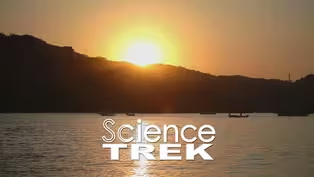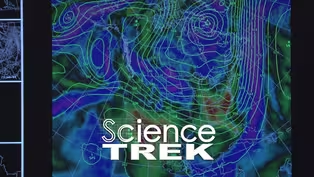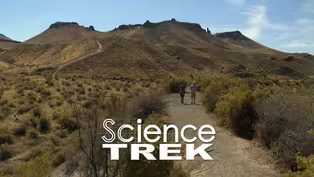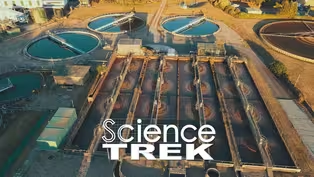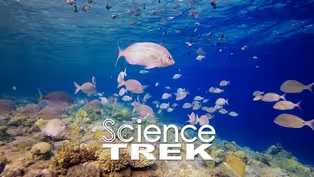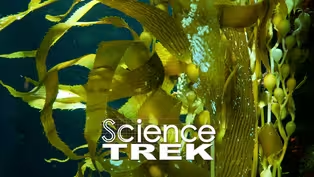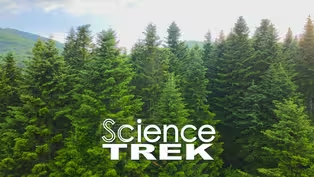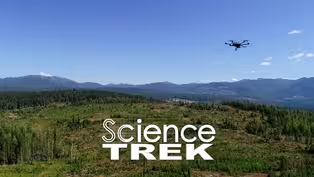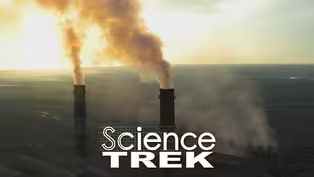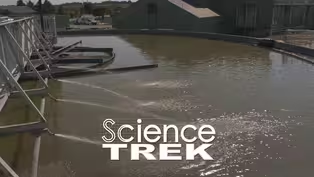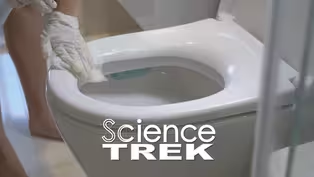
Sewage: After the Flush
Special | 5m 39sVideo has Closed Captions
What happens after you flush?
Sewage or wastewater treatment systems have made all the difference to our life spans. But how do they work? Follow what happens after you flush.
Problems playing video? | Closed Captioning Feedback
Problems playing video? | Closed Captioning Feedback
Science Trek is a local public television program presented by IdahoPTV
Major Funding by the Laura Moore Cunningham Foundation and the Idaho National Laboratory. Additional Funding by Sparklight, the Friends of Idaho Public Television and the Corporation for Public Broadcasting.

Sewage: After the Flush
Special | 5m 39sVideo has Closed Captions
Sewage or wastewater treatment systems have made all the difference to our life spans. But how do they work? Follow what happens after you flush.
Problems playing video? | Closed Captioning Feedback
How to Watch Science Trek
Science Trek is available to stream on pbs.org and the free PBS App, available on iPhone, Apple TV, Android TV, Android smartphones, Amazon Fire TV, Amazon Fire Tablet, Roku, Samsung Smart TV, and Vizio.
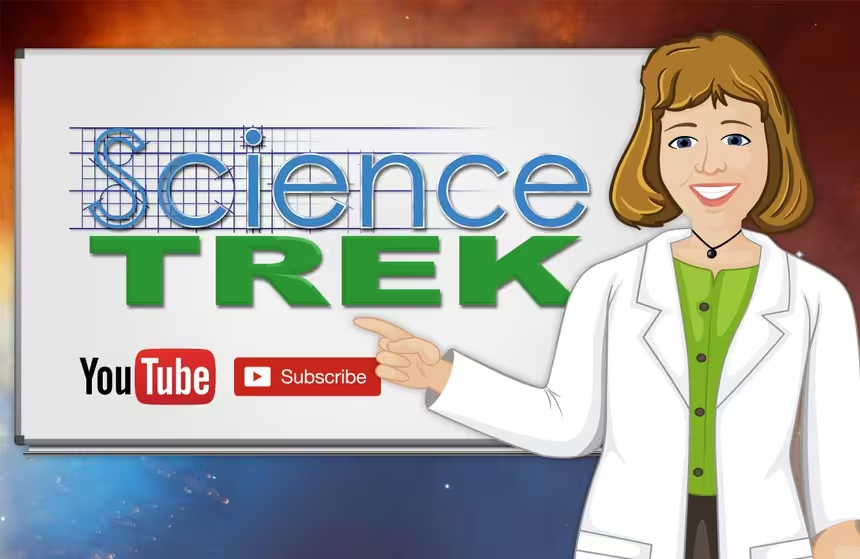
Science Trek
Science Trek is a place where parents, kids, and educators can watch short, educational videos on a variety of science topics. Every Monday Science Trek releases a new video that introduces children to math, science, technology, engineering, and math (STEM) career potentials in a fun, informative way.More from This Collection
Weather: Meteorologists At Work
Video has Closed Captions
How do meteorologists forecast the weather? (5m 13s)
Deserts: Cacti, Bees and the Sonoran Desert
Video has Closed Captions
How do Saguaro Cacti survive in the desert? (6m 23s)
Sewage: Sewage Through the Ages
Video has Closed Captions
What shouldn’t you put down the drain or flush away? (5m 59s)
Oceans: What's Under the Surface?
Video has Closed Captions
Oceans cover 70% of the Earth’s surface. Find out more about what’s under the surface. (7m 4s)
Oceans: Saving Kelp with AI and ROV
Video has Closed Captions
How do you use AI, ROV and an x-box joystick to save kelp? (6m 50s)
Video has Closed Captions
Forests provide us oxygen to breathe and much more. Find out about Forests. (5m 5s)
Forests: Flying Drones for the Trees
Video has Closed Captions
Learn about the latest technology used to manage forest land. (6m 49s)
Climate: Climate Change and Greenhouse Gases
Video has Closed Captions
Meet a climate scientist and join her on a mission. (6m 11s)
Providing Support for PBS.org
Learn Moreabout PBS online sponsorshipJoan Cartan-Hansen, Host: What happens after you flush the toilet?
[FLUSHING] Find out how sewage gets treated.
[MUSIC] [KNOCKING] Student 1: Hey, let me in.
Student 2: I'm busy.
Student 1: It's an emergency.
Student 1: It's gone.
Student 2: Of course, I flushed.
Student 1: But where did it go?
Cartan-Hansen: Wastewater from your house, your sink and toilet all flow into pipes underneath your house and into your city's sewer lines.
Aimee Hughes: We have over 1000 miles of pipe that run underneath the streets of Boise that bring that used water to our water renewal facilities.
Cartan-Hansen: Boise Idaho has a population of about 236 thousand people and treats 40 million gallons of wastewater every day.
That's enough water to fill bronco stadium 80 feet deep.
The process starts by separating out the solids.
Hughes: The first part of the process is called grit removal, where we actually remove things that should not have been flashed originally.
Things like trash, um, car keys odd things that people accidentally flush or put down the toilet.
Cartan-Hansen: You should be careful about what you flush.
Pipes carrying waste water can get clogged with all the debris and that can be a giant, smelly mess.
Hughes: So, we remind our users that your toilet is not a trash can, and you should only be flushing the four P's: pee, poop, puke, or toilet paper.
Once the trash and grit is removed, anything smaller than a quarter of an inch gets sent further on the process where we start to actively separate solids from liquids.
Cartan-Hansen: Poop, or what they call solids or sludge, is sent to a processing center.
It's put into an anaerobic digester.
This is a tank with very low oxygen levels....Perfect for microorganisms to take over.
Hughes: Those microorganisms are able to metabolize and process the waste that they've consumed and they start to release methane gas.
Cartan-Hansen: The treatment facility uses that methane gas as a heating source for their buildings.
Hughes: After the digester, we're going to de-water those biosolids take out that last remaining bit of water.
And then it's officially called biosolid and that's our fertilizer source.
Cartan-Hansen: The city uses that fertilizer on city owned farms.
Those farms raise crops to feed cattle.
And proceeds from crop sales goes to reduce city sewer fees.
Hughes: The liquid part of the use water is sent further along the process where we start to utilize naturally occurring microorganisms, or we call them bugs.
Those bugs actually come from us.
They live in our gut.
So anytime you flush the toilet, you're sending more of those microorganisms or bugs to a water renewal facility.
And they actually utilize the waste as a food source.
And that's actually how we clean the water.
Once those microorganisms have done their job and eaten the waste out of the wastewater or use water, we send it to what's called secondary clarification.
And we allow the solids to separate from the liquids.
Once again, just cleaning the water to a little bit higher of a level that's safe for human use.
After secondary clarification, we go through UV or ultraviolet disinfection where we utilize ultraviolet rays, just like the sun to alter the DNA in those microorganisms so that they can no longer reproduce.
If they can't reproduce, they will actually die off quite quickly.
Once that happens, the water is safe to be discharged into the receiving water body.
Cartan-Hansen: In this case, the now clean water is released into the Boise River.
From toilet flush to drinkable water takes about 24 hours.
Treating sewage is essential for lots of reasons.
Untreated sewage can spread disease, it can pollute rivers and lakes, and most importantly, we need to keep our water clean because we can't make any more.
Hughes: We cannot make more water.
All the water that we have now on earth is all we're ever going to have.
And with the increase of populations and water consumption, it's extremely important that we have water for our everyday needs and we have safe water.
So by reusing or renewing the water we're able to do just that, make sure that we have enough to use for every day at home.
Student 1: That's very interesting, but I'm still going to be in trouble.
Dad's voice: Honey, do you know where my golf balls are?
Together: Run!
Cartan-Hansen: If you want to learn more about sewage, check out the science trek website.
You'll find it at science trek dot org.
[MUSIC] ANNOUNCER: Presentation of Science Trek on Idaho Public Television is made possible through the generous support of the Laura Moore Cunningham Foundation, committed to fulfilling the Moore and Bettis family legacy of building the great state of Idaho.
By the Idaho National Laboratory, mentoring talent and finding solutions for energy and security challenges, by The Friends of Idaho Public Television and by the Corporation for Public
Video has Closed Captions
Clip: Special | 1m 4s | Find out what are the four Ps and what goes down your toilet. (1m 4s)
Providing Support for PBS.org
Learn Moreabout PBS online sponsorship
- Science and Nature

Explore scientific discoveries on television's most acclaimed science documentary series.

- Science and Nature

Capturing the splendor of the natural world, from the African plains to the Antarctic ice.












Support for PBS provided by:
Science Trek is a local public television program presented by IdahoPTV
Major Funding by the Laura Moore Cunningham Foundation and the Idaho National Laboratory. Additional Funding by Sparklight, the Friends of Idaho Public Television and the Corporation for Public Broadcasting.
